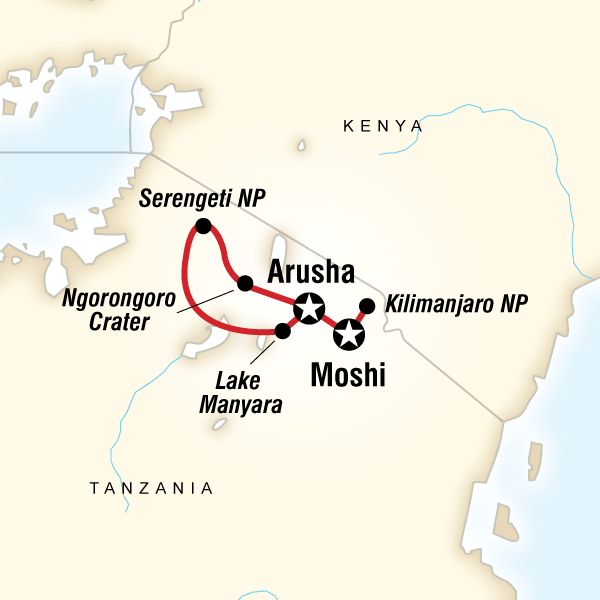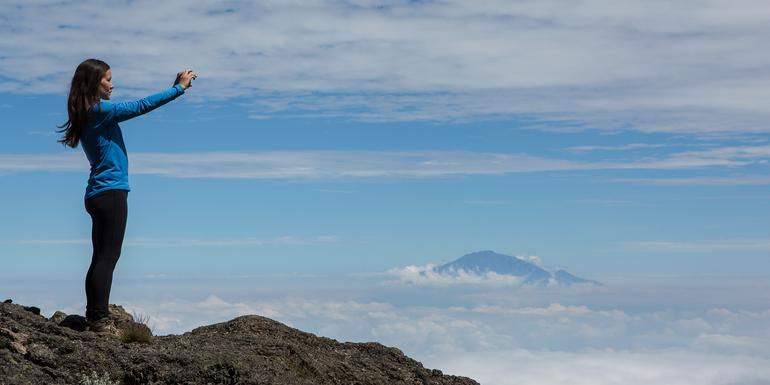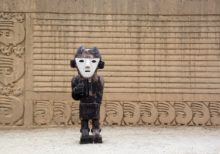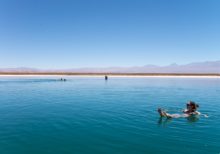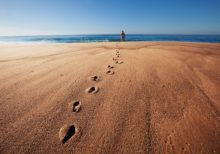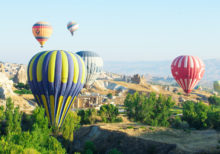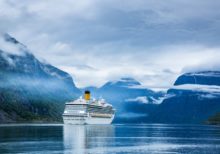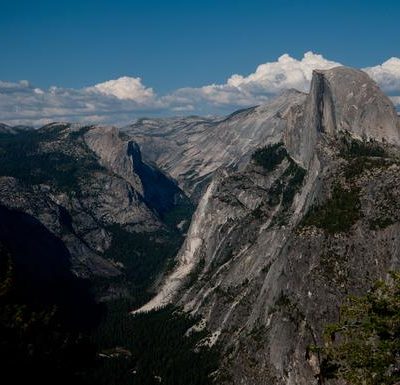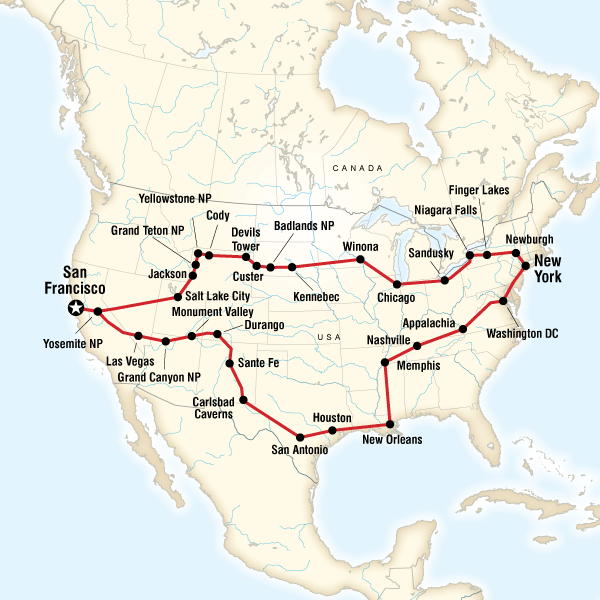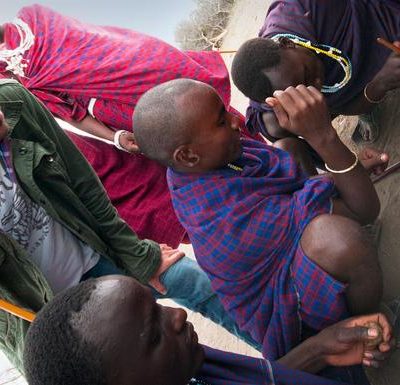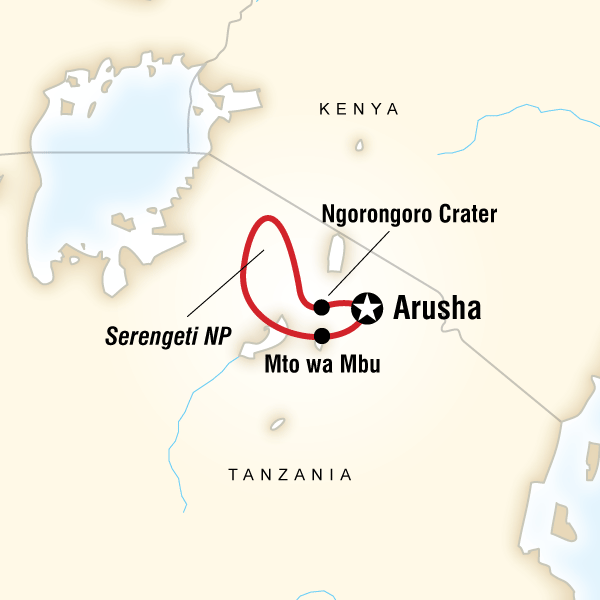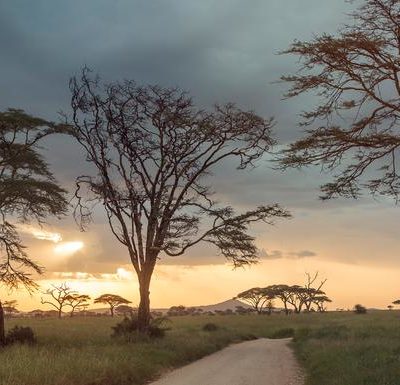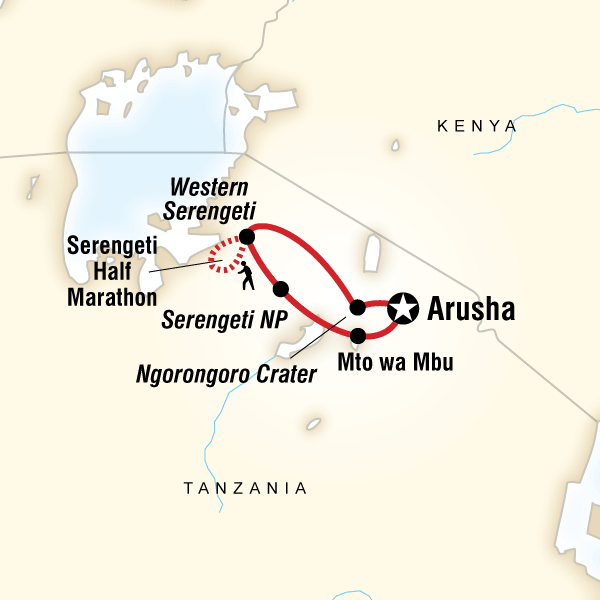More Information
Dossier Disclaimer
The information in this trip details document has been compiled with care and is provided in good faith. However it is subject to change, and does not form part of the contract between the client and the operator. The itinerary featured is correct at time of printing. It may differ slightly to the one in the brochure. Occasionally our itineraries change as we make improvements that stem from past travellers, comments and our own research. Sometimes it can be a small change like adding an extra meal along the itinerary. Sometimes the change may result in us altering the tour for the coming year. Ultimately, our goal is to provide you with the most rewarding experience. Please note that our brochure is usually released in November each year. If you have booked from the previous brochure you may find there have been some changes to the itinerary.
VERY IMPORTANT: Please ensure that you print a final copy of your Trip Details to review a couple of days prior to travel, in case there have been changes that affect your plans.
Itinerary Disclaimer
While it is our intention to adhere to the route described below, there is a certain amount of flexibility built into the itinerary and on occasion it may be necessary, or desirable to make alterations. The itinerary is brief, as we never know exactly where our journey will take us. Due to our style of travel and the regions we visit, travel can be unpredictable. The Trip Details document is a general guide to the tour and region and any mention of specific destinations or wildlife is by no means a guarantee that they will be visited or encountered. Aboard expedition trips visits to research stations depend on final permission.
Additionally, any travel times listed are approximations only and subject to vary due to local circumstances.
Important Notes
Please note: Once the park fees are paid Kilimanjaro International Park is not able to provide refunds for any unused days. Passengers should be aware that, for any reason, they are unable to make the trek to the summit, then any additional cost will be at their own expense.
1. COMBO TRIP
Please note that this trip is a combination of multiple G Adventures tours. As such, the staff and/or particular vehicles operating your tour may change between tour segments. You may also expect some group members to join or leave the tour, between tour segments.
2. SLEEPING BAGS
Sleeping bags cannot be rented on any of our Africa overland or safari trips
3. MIGRATION
Tanzania and Kenya
The Seronera Plains, which lie in the southeast of the National Park and extend into the western Ngorongoro Conservation Area, form the main ungulate calving grounds of the Serengeti. The wildebeest typically disperse into the Seronera plains during the short rains, which fall in late November or early December, before calving in January, and staying put until the end of the long rains from January to early May. Towards the end of April the wildebeest start to congregate on the southern plains in the preparation for the 800km northward migration. The major obstacle faced by the wildebeest on this migration is the crossing for the Grumeti River through the western corridor, which typically occurs from June into early July. From July to October, the ungulates disperse again, with about half of them crossing the Mara River into Kenya’s Masai Mara Game Reserve and the remainder spreading out through the northern and western Serengeti. By late October the animals have generally started to plod back southward to the Seronera Plains, to arrive there in late November when the cycle starts all over again.
4. TRAVEL DAYS
The safari portion of your trip is not a physically demanding journey; however, travelling can be difficult, as long drives and poor road conditions are the rule as opposed to the exception in Tanzania. A safari is about travelling to see animals, so we cover long distances crossing the region to visit different game parks. Once there, we spend the majority of the time viewing game while driving in the parks. This translates to a lot of driving. Despite this, the diversity and scenery of the African landscape, the local culture and abundant wildlife are all well worth the experience.
5. COMBO TRIP
Please note that this tour is a combination of two G Adventures tours. This trip combines our Kiliminjaro Trek (DTKM), Tanzania Wildlife Experience (DTWE).
6. OTHER TRAVELLERS
Please be aware there are no minimums on the Kilimanjaro portion of this adventure. The nature of these tours is such that it is possible for certain components to have a lower number of passengers.
7. DEPARTURE
You are responsible for making your own arrangements from Arusha on day 14 (departure day), as the tour ends in Arusha.
8. LUGGAGE COMPLICATIONS FLYING INTO KILIMANJARO
It occasionally happens that luggage on international flights into Kilimanjaro does not arrive. Please be aware that this may happen, especially if you have a tight connection, are flying with different airlines with a connection, have a last minute flight change or re-route, or fly from or connect through another African centre. Please be prepared and keep all important documentation and valuables on your person. As well we recommend a change of clothes in your hand luggage. If unfortunately this does happen, and your luggage does not arrive, you should be entitled to a limited initial compensation from your airline. In Kilimanjaro, the arrival of lost luggage normally takes between 48 and 72 hours after the initial plane’s arrival. The airlines technically should be responsible to forward your luggage to you, to your hotel or elsewhere in Tanzania. You may find that you will be needed to start your trek and you still have not received your luggage. Considering that the customer service standards in Tanzania are different from home, and that we find that the airlines are not always pro-active in helping luggage in its care be reunited with its owner, it is recommended that you purchase or hire locally the needed items, and speak to your G Adventures representative at the start hotel to persist with your airline to retrieve your luggage. Once your luggage is retrieved, it should be able to be forwarded to you – depending where you are. Please note that any costs that you may incur for luggage retrieval or sending luggage are not the responsibility of G Adventures, though we will always strive to assist you in any way possible. You should always keep all receipts and documentation, and contact your airline or insurance provider for reimbursement.
9. FLYING THROUGH LONDON-HEATHROW TO EAST AFRICA?
Please note that regardless of the rules in other centres, travellers flying from or connecting in London-Heathrow are currently only permitted one carry-on piece of luggage on board flights to Nairobi. If you arrive to the security gate with 2 pieces, you will be forced to check-in one of them, which may result in complications noted in #8. This restriction is in place as of the time of writing, though local rules and regulations may indeed change. It is thus advisable to contact your airline directly for the most up-to-date information.
10. YELLOW FEVER
It may be required to show a Yellow Fever certificate upon entering the country visited. Please check in with your local health expert for advice on Yellow Fever and other inoculations required for this area.
11. ELECTRICITY
The power supply in Tanzania is nominally 240VAC, 50hz. Variable voltage, spikes and sporadic, unexpected, unscheduled power cuts of varying duration can be expected.
12. MONEY
For extra expenses at the start/end hotel, cash or visa card are the only accepted form of payment. Please note however, there will be extra charges for using your credit card. As a result of this it is preferable to settle all expenses in cash.
13. HEALTH AND SAFETY
Please read the Health and Safety section below for an important message on Physical Fitness and Altitude and Acclimatization.
14. EXTRAS
Looking to add to your experience? Check out our Extras! Specially designed for travellers with unique interests, theme packs are optional add-ons to your G adventures trip that make your adventure more you-centric. Extras must be booked prior to departure, please see details in our optional activities field and ask you sales CEO.
Group Leader Description
For your hike on Mt. Kilimanjaro, you will be lead by an experienced certified mountain guide. To round out the team, you will be joined by an assistant guide (for groups of more than one person), a cook, and a team of porters.
Your guide has been trained in mountain guiding skills, first aid and emergency response, flora and fauna, and group management. All guides are licensed by KINAPA, the National Park Authority. Your cook is an experienced cook who will prepare a variety of nutritious, and hearty meals. As a general rule, each hiker will be accompanied by 2 porters, who assist in carrying both your bag and the team’s gear (tents, food, etc). Please note English is often the 3rd or 4th language of the Tanzanians in the area of Mt. Kilimanjaro, therefore your guide will speak a basic English.
The porter will carry a maximum of 15kg of your belongings and 5kg of personal gear. All our Porters will carry a maximum of 20kg and there is a strict weigh in by the Kilimanjaro Park authority.
On day 7 in Arusha, you will be met by a G Adventures Chief Experience Officer (CEO), who will lead your tour through the safari portion of your trip. To round out the team, he/she will be accompanied by an expert driver/guide and a camp cook. The Chief Experience Officer (CEO) will be the group manager and leader. He/she organizes the trip, and will be there to assist you when needed. Your leader will be from East Africa, and will have a general knowledge base of the region and wildlife. He/she will take care of the small things so you can concentrate on enjoying your adventure. Your driver/guide is skilled and experienced driver and a certified safari guide, and is an integral part of the team. As well, your cook will prepare the camp meals to add some further local flavour to the trip.
About our Transportation
The transfer from Moshi to Mt. Kilimanjaro and back for your trek is done in a private minibus or van. The transfer from Moshi to Arusha for your safari is done in a private minibus or van. The safari portion is in private 5 or 7-seat 4×4 safari vehicle. If there is a large group, 2 vehicles will be used, and the group will be split up.
Road conditions can run the full range of conditions from new to very poor, and during dry seasons, the roads (just like the trails on Mt. Kili) can become very dusty. This style of travel is by no means luxurious, but the seats are comfortable and having our own private vehicles allow us the flexibility of making stops when needed, and to stay and watch that crouching lion prepare for an attack.
Speed governors set to 80kph are used on all vehicles to ensure a safe driving speed. Please note for your own safety it is mandatory to wear your seat belt at all times when in a vehicle.
All G Adventure vehicles are regularly serviced and follow a strict maintenance schedule. However given the long travel days and rough conditions of many of the roads in Africa, vehicles can and do breakdown on occasion. If such situations occur all drivers are trained mechanics and any vehicle issues are rectified as quickly as possible so as to not disrupt your trip. Your patience is requested if the vehicle you are traveling in happens to encounter a mechanical fault.
Solo Travellers
We believe solo travellers should not have to pay more to travel so our group trips are designed for shared accommodation and do not involve a single supplement. Single travellers joining group trips are paired in twin or multi-share accommodation with someone of the same sex for the duration of the trip. Some of our Independent trips are designed differently and solo travellers on these itineraries must pay the single trip price.
My Own Room
Please note that if you have booked the “My Own Room/Tent” option for this tour, you will receive your own single room/tent for all nights of the safari portion only, and NOT in Moshi or on Kilimanjaro.
My Own Room Exceptions
Day 1 to 6
About Accommodation
Single Travellers. We believe single travellers should not have to pay more to travel so our group trips are designed for shared accommodation and do not involve a single supplement. Single travellers joining group trips are paired in twin-share accommodation and tents with someone of the same sex for the duration of the trip.
Your starting hotel in Moshi has a number of services and facilities available as follows; Internet, laundry, gear hire, luggage storage, telephone services, TV lounge, swimming pool, sauna, curio shop, garden bar, outdoor dining area and taxis should you want to go to/from Moshi as the hotel is located just a few kilometers outside of town.
On the trek you will stay in non-heated, wooden A-frame huts with simple, single beds that have thin mattresses. There is no electricity so headlamps are essential. Be prepared to possibly share a hut with members of the opposite sex. Your third sleep, before your summit hike, will be at the most basic of the shelters. This structure has many bunk beds, shared with several other hikers. With the altitude, the shelters do get very cold. For added comfort and insulation, you may consider bringing your own sleeping mat to lay on top of the provided mattresses. All huts have shared toilet and bathing facilities.
Drinking water: On day 2, you should bring bottled water from the hotel for your first day’s hike. Beyond that, purified (filtered) mountain water will be provided for you for the duration of the hike.
Please note, in the event of having to descend from your climb early due to altitude sickness, injury or exhaustion, any extra meals or nights spent at our Moshi base Hotel will be at your own expense and will not be covered by G Adventures.
Camping on safari is truly an adventure. You will be able to get off the beaten track to get a first-hand experience of the beautiful wilderness and nature. While camping, we stay at designated public campsites inside of and nearby the national reserves and parks. These campsites generally are very basic, and we carry tents to pitch at the campsites.
Our camp site outside of Lake Manyara National Park is well serviced with a small restaurant/bar, store, warm showers, flush toilets, and electricity. Once we move into the Serengeti National Park and to the Ngorongoro Crater rim, the facilities become more basic with long-drop latrines, simple cold shower or bathing, and no electricity.
Camps are open to the natural environment – care must be taken, especially at night, when a torch/flashlight is recommended when walking around the camp area.
The idea of camping in Africa can be a daunting one. For those not accustomed to ‘roughing it’ for a few days we offer a full camping service. All tents are pitched for you, meals are prepared and served and the washing up is done by G Adventures staff. This leaves you with more time to enjoy your surroundings and is ideal for first-time campers who may be worried about the challenges such a trip can entail.
Joining Hotel
For details of your joining hotel please refer to your tour voucher, G Account, the G Adventures App or contact your travel agent.
Joining Instructions
Please make your way to the joining hotel. Kilimanjaro International airport is approximately 40km, or 40 minutes, from Moshi. Taxis are available to transfer you to Moshi, and cost approximately USD 50 per car. If you arriving in Moshi from Nairobi, Kenya, there is a public shuttle bus that leaves Nairobi at 8:00am daily to Moshi. It is a direct bus via Arusha, and with border formalities, and a break (and potentially a change of vehicle) in Arusha, the trip is approximately 8 hours. There are a number of local companies that offer this service, and this can be organized locally the morning of. In addition, for your convenience, you may pre-reserve a seat on our partner shuttle service through G Adventures.
For pre-booked transfers from Kilimanjaro International Airport to our Moshi hotel, G Adventures representative present will assist you or your driver will be waiting with a G Adventures sign. At times there are taxi drivers who will try to solicit your business, so please be aware of them and proceed directly to the G Adventures representative. For any issues relating to pre booked transfers for Kilimanjaro International Airport including delays or missed transfers, please contact our airport transfer operator
Musaddiq: +255 754 400 141 or +255 787 400 142 (From outside Tanzania)
Musaddiq: 0754 400 141 or 0787 400 142 (From within Tanzania)
Please note that day 1 is an arrival day and no activities have been planned, though a brief departure meeting will be held in the the hotel in evening of day 1. Here you will meet our local G Adventures representative, and possibly some of your guiding team. At this point you will receive information about general and specific aspects of the “Kili” trek portion of your trip. Upon arrival to the hotel, our G Adventures representative be there to assist you with anything you need. If you arrive late and miss the meeting, s/he will leave you a message detailing what time and where you should meet the next morning.
This tour departs Moshi for Mt. Kilimanjaro in the morning of day 2.
Arrival Complications
We don’t expect any problems, and nor should you, but if for any reason you are unable to commence your trip as scheduled, please refer to the emergency contact details provided in this dossier and contact us as soon as possible. If you have a pre-booked transfer, and you have not made contact with our representative within 30 minutes of clearing customs and immigration, we recommend that you make your own way to the Starting Point hotel, following the Joining Instructions. Please apply to your travel agent on your return for a refund of the transfer cost if this occurs.
Emergency Contact
Should you need to contact us during a situation of dire need, it is best to first call either the G Adventures Local Representative (if one is listed below) or our G Adventures Local Office. If for any reason you do not receive an immediate answer, please leave a detailed message and contact information, so they may return your call and assist you as soon as possible.
AIRPORT TRANSFER
If you have purchased an arrival through G Adventures or if an arrival transfer is included in the cost of your tour, please note that:
Your arrival transfer has been arranged based on flight information provided to us. If you are advised of a flight schedule change within 48 hours of your scheduled arrival time, we will do our best to rearrange your arrival transfer however we cannot guarantee this. If your arrival transfer does not arrive within 30 minutes after you have exited the arrivals area please take a taxi to your start point hotel.
For any issues relating to pre-booked transfers for Kilimanjaro International Airport, including delays or missed transfers, please contact our airport transfer operator:
Musaddiq: +255 754 400 141 or +255 787 400 142 (From outside Tanzania)
Musaddiq: 0754 400 141 or 0787 400 142 (From within Tanzania)
EMERGENCY CONTACT NUMBERS
G Adventures Emergency Mobile Phone for our Local Office in Nairobi, Kenya: +254 727 208 832.
Locally, from Kenya, dial 0727 208 832.
If you are unable for any reason to contact our local office, please call the numbers listed below, which will connect you directly with our 24 hour Sales team, who will happily assist you.
Toll-free, North America only: 1 888 800 4100
Calls from UK: 0344 272 0000
Calls from Germany: 0800 365 1000
Calls from Australia: 1 300 796 618
Calls from New Zealand: 0800 333 307
Outside North America, Australia, New Zealand, Germany and the UK: +1 416 260 0999
Continuing Point Hotel
Arusha, Tanzania:
Oupost Lodge
37A Serengeti Rd.
Arusha, Tanzania
Tel: +255 27 2548405 / 715 430 358
Continuing Point Instructions
As previously mentioned, tour is a combination of two G Adventures tours. This trip combines our Mt. Kiliminjaro Trek (DTKM) and Tanzania Wildlife Experience (DTWE).
After the Kilimanjaro portion of your trip, you will be transferred in a private vehicle from Moshi to your continuing point hotel in Arusha. There, you will be joined by a larger G Adventures group for days 7-13 of your trip.
Finishing Point Instructions
his tour ends on day 13. You are free to depart any time this day.
Kilimanjaro International Airport is approximately 40km and 40 minutes from Arusha. A taxi is 50-60 USD per car, but we recommend that you contact your airline in Arusha, as some airlines may have a free airport shuttle from Arusha.day.
If you are returning to Nairobi, Kenya, there is a public shuttle bus that leaves Arusha at 8:00am and 14:00pm daily to Nairobi. It is a direct bus, and with border formalities, the trip usually takes 7-8 hours. There are a number of local companies that offer this service, and this can be organized locally the same day. These buses currently depart from the Bella Luna Hotel parking areas. In addition, for your convenience, you may pre-reserve a seat on our partner shuttle service through G Adventures.
What to Take
As you will be trekking up Africa’s highest mountain, you will be passing through a number of different climate zones, and should pack to prepare for a number of extremes – hot and sunny, cool, cloudy, and misty, fog, rain (your first day you will ascending through a section of rain forest), wind, and lastly snow and cold. You may experience one or all of these conditions in the same day on your trek. In the lowlands, temperatures in the shade can reach 35C, and in the highlands it will be below freezing, with possible rain and fog. The use of lightweight, breathable, easily removable layers of clothes works best to allow you to adapt to the local conditions. We recommend breathable, moisture-wicking fabrics made of wool or synthetic fibers. Cotton is not recommended for hiking as it does not allow for heat or moisture to enter or escape, and it will not dry once wet. Please note that is gets extremely cold near the top of Mt. Kilimanjaro, and you will begin hiking your final ascent to the summit at approximately midnight, and hike through the coldest part of the day. For this, in addition to several warm layers and good boots to grip as you climb over frozen scree, ice, and snow, you will need warm protection for your extremities – warm socks, gloves, and a warm winter hat. Lastly, Mt. Kilimanjaro is located only a few hundred kilometres from the equator, and at altitude, the sun’s affects are heightened. Use a hat, sunglasses, sun screen, and wear proper clothing to protect yourself from the sun, to reduce the risk of sunstroke. Please note, secure luggage and valuables storage facilities are available at your Moshi hotel while you climb. Your hotel in Arusha also offers storage facilities for any extra mountain gear/clothing that you do not require for the safari portion of the trip. With regard to the type of pack(s) to use, two packs would be useful, one larger pack (not exceeding 20kg) with most of your gear will be carried by the porters inside large canvas duffle bags, and a smaller 20-30L pack that you will carry containing your water, snacks and wet weather gear.
Cameras whether Video or film, need to be protected against the severe cold weather either in warm pouch or the interior pockets of your clothing. A selection of lenses will aid the final results although weight and bulk will obviously influence your selection. A polarized or neutral density filter is recommended, as is slide film rather than print. Bring your own film as it can be hard to find and expensive in Tanzania.
For digital equipment and mp3 players, check with the manufacturer’s specifications for temperature range (especially battery life), water tightness, altitude range, and general hardiness.
For your safari, most of the roads or un-sealed, dirt roads, and especially in the game parks, there may be dust that will enter your vehicles. We suggest lightweight, synthetic or polyester clothes (not all white), because there are lighter, will hold less dirt, and will often clean and dry more easily. A set of smart casual clothes is also advisable for your time in Arusha.
You will be on the move a lot, so our advice is to pack as lightly as possible. Your baggage should be clearly labelled and restricted to one soft compact suitcase, sports bag, or backpack, no larger than 30cm(height) x 30cm(width) x 60cm(length), maximum 15kg, plus a day-pack. Luggage limits on airlines are strictly enforced, and due to limited vehicle capacity, the cost of transporting any luggage beyond these restrictions is the responsibility of the client. Please note, if you are travelling with a large amount of luggage because of your trek or from other travels on the same trip, in Arusha you may leave a portion of it at the Continuing Point hotel, and pick it up after the Safari portion of the trip; this is indeed possible as storage facilities are available.
Checklist
-Documents
-Passport
-Insurance info
-Flight info
-Cash, credit and debit cards
-Vouchers and pre-departure information
-Required visas or vaccination certificates
-Cash in USD
-Yellow Fever certificate
– 3-4 Season sleeping bag and liner
– small travel pillow
– Weather-appropriate clothing
– Warm winter coat
– Warm fleece or wool jumper/jacket
– Warm layers
– Waterproof jacket and pants
– 3 shirts/t-shirts, cool and breathable
– 2 Long-sleeved shirts or sweaters
– 1 pair of shorts, mid-thigh or longer
– Hiking pants
– Long pants/jeans
– Thermal underwear – top and bottoms
– Waterproof, light weight hiking boots
– Tennis shoes or sandals for relaxing in the evening
– Quick-dry socks
– Wool socks
– Warm gloves
– Warm hat
– Scarf
– Water bottles or “camel baks”
– Small hot water thermos
– Sun hat/Bandana
– Sunglasses
– Sunscreen
– Snacks
– Personal first aid kit (should contain Lip balm with sunscreen, Ibuprofen , Malaria pills, band aids/plasters, adhesive tape, anti-histamine, Antiseptic cream, Imodium or similar tablets for mild cases of diarrhea, rehydration powder (salt and sugar mix), throat lozenges, insect repellent, extra prescription drugs you may be taking)
– Toiletries
– Toilet paper
-Day pack
-Camera with extra memory cards and batteries
-Personal Entertainment
-Binoculars
-Waterproof backpack cover
-Flashlight/Torch
-Outlet adapter
-Insect Repellent
-Moneybelt
-Antibacterial wipes/gel
— **Refillable water bottle/flask (plastic/disposable bottles are not allowed on the mountain, and will be confiscated at the park entry)
-Pocketknife
-Water purification tablets or filter (optional)
-Gaiters
-Walking poles (Optional)
Laundry
Hand washing of clothes can be done at campsites, as most have simple facilities for this. We recommend you bring a non polluting/biodegradable soap, as well as a roll of simple string to act as a drying line for your clothes. If you arrive in the late afternoon, or if there is poor weather, it may not be possible for your clothes to completely dry. Your continuing point and finishing point hotels also have laundry service for a fee. Upon completion of your Kilimanjaro Trek you will be transferred to your continuing hotel where you will have an opportunity to get your (at this stage, very dirty!) clothes laundered. Be sure to hand your laundry into reception as soon as you arrive so that the staff can have it washed and dried by the next morning when you leave for your safari.
Visas
All countries require travellers to have a valid passport (with a minimum 6 months validity). Please note that upon arrival by air to Kilimanjaro International Airport, Tanzania, most nationals can obtain a visa for US$50 in $US cash (valid for those who would be permitted a Tanzania visa while still in their own country), though the current cost of a Tanzanian Visa for U.S. nationals is $100. This visa is valid for up to 3 months with multiple entries/exits permitted to Kenya and Uganda only. If you are transiting through Kenya, you will have to purchase a transit visa en route which is valid for 6 nights / 7 days within Kenya, for one entry into Kenya only, and costs US$10 OR 10 GBP OR 10 EUR or 10 SWF. Alternatively, you may purchase a normal visa for US$25 which is valid for up to 3 months. As fees and policies can change, we highly recommend that you contact your local embassy or consulate for the most up-to-date visa requirements, or see your travel agent. It is your responsibility to have the correct travel documentation.
East Africa Tourist Visa
An East Africa Tourist Visa allows the holder to move freely between Kenya, Rwanda and Uganda with only one Visa, and is valid for a period of 90 days. It also acts as a multiple entry Visa, so if you leave any of the above countries, you do not need a new Visa to re-enter (provided it is within the 90 day validity period). These need to be applied for in advance, and you should contact the foreign Embassy (of the country you will be entering through) for more details. The cost is 100USD.
Please see below for more information:
http://www.visiteastafrica.org/visa/
IMPORTANT NOTE
It may be required to show a Yellow Fever certificate upon entering the country. Please check in with your local consulate and health expert for advice on Yellow Fever and other inoculations required for this area.
Spending Money
Every traveller is different and therefore spending money requirements will vary. Some travellers may drink more than others while other travellers like to purchase more souvenirs than most. Please consider your own spending habits when it comes to allowing for drinks, shopping and tipping. Please also remember the following specific recommendations when planning your trip.
Money Exchange
The local currency in Tanzania is the Tanzanian Shilling (TSH).
Shillings can be obtained locally by changing foreign currency or by using ATMs (where available) which will disperse local currency. Your CEO will inform you where you can change money throughout the tour and approximately how much money you will need for each country.
The easiest foreign currency to exchange for locally for any of the local currencies is the $US; however the British Pound and Euro may also be exchanged as well. Please note that due to past problems with forgery, $US notes that are older than year 2006 are not accepted in Africa.
Large note ($US 50, $US 100 etc) can be difficult to change in some places, but will gain you the best exchange rate.
If you plan to rely on cash, please bring foreign currency (Euro, Pound, USD) with you, as it is often expensive to buy these currencies locally. And in more rural areas, it is often not likely.
If you plan to buy your visas at borders, you will need to bring $USD cash to pay for these visas. Please note you cannot use the local currency or any other currency to buy these visas- they must be purchased in USD.
Please do not bring Travellers’ cheques toAfrica. They are difficult if not impossible to exchange in many places.
Visa/Plus system cards are the most widely accepted debit cards. it is harder to find machines Mastercard/Cirrus cards. We highly recommend that if you hold a Mastercard, you obtain a Visa card prior to departure and travel with both. This is also useful should somethingunforeseen happen to one of your cards during your travels.
While there are many ATMs in the major centres, there are no guarantees that your credit or debit cards will actually work in Africa. Check with your bank.
Credit cards can be used in major cities and towns ONLY but please do not rely on them as a method of payment because they are generally not widely accepted. You should be aware that to purchase products or services on a credit card a fee of 5%-10% usually applies. The majority of our optional activities can also be paid by credit card. Your CEO will advise on these.
Please note that in many areas there may be occasional power-outages, where there will be no electricity for hours at a time. In addition, ATMs outside of larger centers often run out of cash or can be out of order unexpectedly. These factors could affect your ability to access money from ATMs. As such, please do not rely on credit or debit cards as your only source of money.
A combination of foreign currency and debit/credit cards for cash advances is best. Always take more rather than less, as you don’t want to spoil the trip by constantly feeling short of funds.
As currency exchange rates can fluctuate often we ask that you refer to the following website for daily exchange rates: www.xe.com.
Emergency Fund
Please also make sure you have access to at least an additional USD $200 (or equivalent) as an ’emergency’ fund, to be used when circumstances outside our control (ex. a natural disaster) require a change to our planned route. This is a rare occurrence!
Tipping
Tipping during your tour is optional, but the gesture is expected as a way to show your satisfaction with the persons who have assisted you on your tour.
Although it may not be customary for you, it is of considerable significance to the people who will take care of you during your travels, as an important source of income for those in the tourism industry. It is one of the most direct ways that you can have a positive economic impact within the communities that you visit.
Giving a tip should be seen as a formal ‘thank you’, and the action should in no way be awkward. The best method of tipping someone that has served the whole group is to plan in advance, and not rush when it comes to saying goodbye.
A suggestion would be for each group member to contribute anonymously by putting their tip into an envelope. This often works the best and the group as a whole should gather to present the gift to the recipient(s), offering their thanks and showing their appreciation. This method brings the action out into the open, allowing for a friendly and appreciative interaction between the group and the recipient(s).
You may use the following as a guideline, all given in a per client format:
Serengeti:
G CEOs and drivers: $3-4 USD each, per day worked.
Certified Safari Guide/Driver: $5-10 USD (full day)
Supply Driver $3-5 USD (full day).
Restaurant/Café servers: 10% of cost of bill, especially when in a large group (no envelope required).
Kilimanjaro:
Tipping is an expected and highly appreciated component of your Mt. Kilimanjaro trek.
Your group will be assigned a CEO/Lead Guide, and a group of porters. The number of porters designated to your group will depend on the amount of baggage and equipment is taken on the trek; this typically works out to 2-3 porters per traveller, but this number will be confirmed by Kilimanjaro National Park rangers at the gate once all baggage is checked.
It is best to present your crew with the group’s tip upon completion of your climb, during the last meal on the mountain. Tips should be placed in a group envelope and a member of the climbing team can hand the envelope directly to the Lead Guide. It is encouraged to announce the amount in front of the group to ensure each crew member knows the total amount.
A tipping guideline to determine this amount is 10% of the total cost of their trek towards tips, per person. So if you paid US$2000 for your trek, you should pay US$200 collectively for your crew. (If there were only one or two of you, it customary to pay slightly more than 10%). A realistic amount for a trip of 5-7 days length would be between 150-200 USD per climber for tips.
If paying each crew member individually, you can use the following chart as a guideline.
(Amounts in USD or local equivalent)
Per Chief Guide: US$10-15 per day
Per Assistant Guide: US$8-10 per day
Per Cook: US$7-$10 per day
Per Porter: US$5-8 per day
Optional Activities
Optional activity prices are subject to change and can fluctuate in relation to the high/low season and the number of people on a specific excursion. Not all excursions listed here may be available, due to season, or weather conditions. As generally not a lot of time is spent in start/end cities, you may want to arrange to arrive early, or stay longer after the trip in order to allow sufficient time to participate in optional activities there.
All prices are in US dollar amounts, per person but will generally be paid in local currency.
MOSHI
Planeterra supported – Tanzania Women’s Cooperative
1hr massage $40USD
*Passengers can support this project by enjoying an after Kilimanjaro massage at Lala Salama (Good Night) Spa. Donations are accepted as well.
**For more information on project please see Associated Planeterra Project
Health
Please note inoculations may be required for the country visited. It is your responsibility to consult with your travel doctor for up to date medical travel information well before departure.
We recommend you contact your family physician, or your local travel clinic for the most up-to-date health information at least one month before departure.
Please ensure you have all the inoculations recommended by your doctor for travel in East Africa. Be aware that Tanzania has regions where malaria is present, including the ones visited. We thus recommend that you take malaria medication; your doctor should be able to recommend the necessary prophylactics. Travellers should also carry a basic travel first-aid kit as medical facilities are basic in Tanzania. An important item to include is a liquid or gel hand sanitizer and/or alcoholic/sanitary wipes, as they will aid in personal cleanliness and hygiene throughout the trip. The local tap water should not be consumed, so any water treatment tablets (ex. iodine), drops, etc, would help. If you have any pre-existing medical condition, you must inform G Adventures prior to the purchase of the tour, and upon arrival, to the CEO so he/she can be prepared to help you.
Yellow Fever Certificate:
It may be required to show a Yellow Fever certificate upon entering the country visited. Please check in with your local health expert for advice on Yellow Fever and other inoculations required for this area.
Sand flies and Mosquitos
Are found in the areas visited. Mosquitos are more prevalent in areas that receive more rainfall, and sand flies, though generally found on the coast, can also be found in dry & dusty conditions inland. Both tend to come out in the early evening and early mornings. Protective clothing, and insect repellent are highly recommended during these times.
Malaria
This infectious disease is transmitted by mosquitos carrying the parasite. These mosquitos are found at altitudes of under 1,800m, and thus can be found in Moshi and the base of the mountain. You must have prophylactics which you can obtain from your local doctor at or health clinic.
Sun
It is very important that you wear sun block, even on a cloudy day, or at high altitudes when it feels cool, as we are near the equator and the sun is very strong. A sunburn can turn a pleasant trip into a painful trip.
Hydration
Even when days are cool please be sure to drink a minimum of two litres of water and refrain from drinking to many diuretics, as while when travelling outdoors the breeze can dehydrate you quickly as well as the heat.
Diarrhoea:
It is normal for people travelling overseas to get an upset stomach due to a change of climate and food. Please make sure that you wash your hands and stay away from street food.
Physical Fitness
Although Kilimanjaro is not a technical mountain climb, it is a major challenge and the rigors of altitude should not be underestimated. Remember that Uhuru peak is 500m higher than Everest Base Camp!! The pace of your ascent coupled with good acclimatization will help you on the climb but it is essential to be mentally and physically prepared before you start. Regular hikes are one of the best ways to prepare, increasing frequency and length, as you get closer to the trek. All aerobic exercises such as cycling, running, swimming and funnily enough aerobics are good for strengthening the cardiovascular system. Generally, any exercise that increases the heart rate for 20 minutes is helpful but don’t over do it just before the climb.
Altitude and Acclimitization
Altitudes are generally defined as follows:-
· High altitude 2,400m – 4,200m
· Very high altitude 4,200m – 5,400m
· Extreme altitude above 5,400m (Uhuru peak is 5,895m)
During the trek it is likely that all climbers will experience at least some form of mild altitude sickness. It is caused by the failure of the body to adapt quickly enough to the reduced level of oxygen in the air at an increased altitude. There are many different symptoms but the most common are headaches, light-headedness, nausea, loss of appetite, tingling in the extremities (toes, fingers) and a mild swell of ankles and fingers.
If you have severe symptoms, go down 1,500 to 2,000 feet right away to see if your symptoms get better. Keep going down until your symptoms go away completely. Medicines that may be used to prevent or treat the symptoms of severe high-altitude illness include acetazolamide and nifedipine. Don’t ignore signs of altitude sickness. People can die of this if they don’t recognize the signs or if they don’t believe their illness is caused by the high altitude. When you have signs of altitude sickness, don’t go higher until you feel better and your symptoms have gone away completely.
Hypothermia:
Hypothermia is a condition where the body becomes dangerously cold. It can be caused by brief exposure to extreme cold, or by prolonged exposure to mild cold. Hypothermia occurs when a person’s deep-core body temperature drops below 35 degrees celsius (95 degrees farenheit). It is the lowered temperature of the organs inside the body that is important – an ordinary thermometer cannot measure this. The person may not actually feel cold but if they stay in a cold environment and do little or nothing to keep warm, then they may run the risk of becoming hypothermic or becoming ill with bronchitis or pneumonia. Both are cold-related illnesses.
Danger signs to watch out for: Drowsiness, very cold skin on parts of the body normally covered, for example, stomach or armpits, Slurred speech, Absence of complaint about feeling cold, even in a bitterly cold environment.
Eye Issues
All contact lens wearers should take care to remove the lenses at night, as the eye needs to absorb oxygen from the atmosphere. The rarefied conditions of altitude reduce oxygen levels and in extreme cases a Corneal Oedema can develop.
Emergency Evacuation
In the event of an emergency on the mountain the rescue team plus one of the assistant guides will descend with the casualty to the park gate. At the gate the casualty will be taken care and the necessary arrangements will be done.
Safety and Security
Many national governments provide a regularly updated advice service on safety issues involved with international travel. We recommend that you check your government’s advice for their latest travel information before departure. We strongly recommend the use of a neck wallet or money belt while travelling, for the safe keeping of your passport, air tickets, travellers’ cheques, cash and other valuable items. Leave your valuable jewelery at home – you won’t need it while travelling. Many of the hotels we use have safety deposit boxes, which is the most secure way of storing your valuables. A lock is recommended for securing your luggage. When travelling on a group trip, please note that your group leader has the authority to amend or cancel any part of the trip itinerary if it deemed necessary, due to safety concerns. Your Chief Experience Officer (CEO) will accompany you on all included activities. During your trip you will have some free time to pursue your own interests, relax and take it easy and explore at your leisure. While your CEO will assist you with options available in a given location, please note that any optional activities you undertake are not part of your itinerary, and we offer no representations about the safety of the activity or the standard of the operators running them. Please use your own good judgement when selecting an activity in your free time. Although the cities visited on tour are generally safe during the day, there can be risks to wandering throughout any major city at night. It is our recommendation to stay in small groups and to take taxis to and from restaurants, or during night time excursions.
Water based activities have an element of danger and excitement built into them. We recommend only participating in water based activities when accompanied by a guide(s). We make every reasonable effort to ensure the fun and adventurous element of any water based activities (in countries with varying degrees of operating standards), have a balanced approach to safety. It is our policy not to allow our CEOs to make arrangements on your behalf for water based activities that are not accompanied by guide(s).
Swimming, including snorkeling, is always at your own risk. Read more about travel safety for ways to further enhance your personal safety while traveling.
Trip Specific Safety
Arusha
-People are generally friendly in Arusha, but don’t let people take advantage of you
-Always leave your passport (It’s better to carry a photocopy of it instead), traveller’s cheques, flight tickets and money that you won’t be using in the safe deposit in your hotel room/reception. This is free of charge to G Adventures clients.
-Remember that like in any other city, you should never leave your bags unattended, nor flaunt jewellery, cameras etc
-Please don’t wander through the city at night. Stick to the main streets only during the day, and after sundown, please take a taxi. Taxis can be organized from reception of your hotel. Also, take the address of the hotel with you.
-Beware of people approaching you on the street with an apparent interest of where you are from, and want to sit down and have a chat with you. These people are con men and will ask you for money.
-People on the street who ask you if you want a safari and have a brochure are often con men, best to avoid these folk. Besides, you’re already on safari!
Photography
Please refrain from taking photos of police stations, airports, bus stations, immigration are border crossings, army barracks and personnel, or any government building. It is against the law and will result in the minimum of your film and camera being confiscated.
Medical Form
Our small group adventures bring together people of all ages. It is very important you are aware that an average level of fitness and mobility is required to undertake our easiest programs. Travellers must be able to walk without the aid of another person, climb 3-4 flights of stairs, step on and off small boats, and carry their own luggage at a minimum. Travellers with a pre-existing medical condition are required to complete a short medical questionnaire, which must be signed by their physician. This is to ensure that travellers have the necessary fitness and mobility to comfortably complete their chosen trip. While our leaders work hard to ensure that all our travellers are catered for equally, it is not their responsibility to help individuals who cannot complete the day’s activities unaided. Please refer to the physical ratings in this Trip Details document for more information.
Please note that all passengers traveling to Antarctica are required to fill out this questionnaire.
The medical questionnaire can be found online at www.gadventures.com/medical-form.
A Couple of Rules
Illegal drugs will not be tolerated on any trips. Possessing or using drugs not only contravenes the laws of the land but also puts the rest of the group at risk. Smoking marijuana and opium is a part of local culture in some parts of the world but is not acceptable for our travellers. Our philosophy of travel is one of respect towards everyone we encounter, and in particular the local people who make the world the special place it is. The exploitation of prostitutes is completely contrary to this philosophy. Our group leader has the right to expel any member of the group if drugs are found in their possession or if they use prostitutes.
Travel Insurance
Travel insurance is compulsory in order to participate on any of our trips. When travelling on a group trip, you will not be permitted to join the group until evidence of travel insurance has been sighted by your leader, who will take note of your insurance details. When selecting a travel insurance policy we require that at a minimum you are covered for medical expenses including emergency evacuation and repatriation. A minimum coverage of USD200,000 is required. G Adventures can provide you with the appropriate coverage. We strongly recommend that the policy also covers personal liability, cancellation, curtailment and loss of luggage and personal effects. If you have credit card insurance we require proof of purchase of the trip (a receipt of credit card statement) with a credit card in your name. Contact your bank for details of their participating insurer, the level of coverage and emergency contact telephone number.
Planeterra-The G Adventures Foundation
Planeterra is G Adventures’ non-profit foundation created to make a positive difference in the communities where G Adventures takes travellers. Planeterra supports sustainable social and environmental solutions in destinations travellers love to visit.
As travellers, it’s natural to want to give back to the places we’ve come to love. But to truly impact poverty, we work to build self-sufficiency, not dependency.
Planeterra partners with grassroots organizations with firsthand knowledge of local culture and true community needs. This ensures that solutions come from the people we support. Then G Adventures brings travellers to visit, fuelling sustainable local income in these communities. This model is helping many rural and marginalized communities on their way to self-sufficiency because they are harnessing the power of the tourism industry as a force for good. G Adventures matches all individual donations and pays all administration costs, which means that 100% of each donation is doubled and goes directly to support our projects. For more information about Planeterra and the projects we support, or to make a donation, please visit planeterra.org.
MAKE EVERY DAY COUNT
Fifty percent of our planet lives on less than $2/day. For the price of a coffee, you can make every day of your trip count by giving back to the communities you visit through Planeterra.
To participate in this program please indicate at the time of booking that you would like to participate in G Adventures’ Dollar-A-Day program, either by clicking the check box online, or by advising your G Adventures specialist or travel agent. (Note: Donation will be charged in the currency of your booking).
Feedback
After your travels, we want to hear from you! Your feedback information is so important to us that we’ll give you 5% off the price of your next G Adventures trip if your feedback is completed on-line within 30 days of finishing your trip. Your tour evaluation will be e-mailed to you 24 hours after the conclusion of your trip. If you do not receive the tour evaluation link in the days after your tour has finished, please drop us a line at customerservice@gadventures.com and we will send it on to you.
Newsletter
Our adventure travel e-newsletter is full of travel news, trip information, interesting stories and contests. To avoid missing out on special offers and updates from G Adventures, subscribe at www.gadventures.com/newsletters/
Stay current on how our company invests in our global community through our foundation – Planeterra. Sign up for Planeterra’s monthly news to learn more about how to give back and support the people and places we love to visit.
Travel Forum – The Watering Hole
Be sure to stop by The Watering Hole, our adventure travel forum. If you’re interested in meeting others booked on your upcoming trip, check out the Departure Lounge section of our forum and introduce yourself. Otherwise, just drop in at anytime to share some travel tips, ask questions, meet other travellers and quench your thirst for travel. Our forum is located at wateringhole.gadventures.com.
Meal Budget
Allow USD110-145 for meals not included.
Meals Included
12 breakfasts, 10 lunches, 8 dinners
What’s Included
Mt Kilimanjaro’s Marangu Route trekking permits and guides, cooks, and porters. Visit to G Adventures-supported Moshi Women’s Cooperative. Mto wa Mbu guided village tour with traditional lunch. Lake Manyara wildlife safari drive. Masai village visit and the G Adventures-supported Clean Cookstove project. Serengeti wildlife safari drives. Ngorongoro Crater wildlife safari drive. All transport between destinations and to/from included activities.
Day 6 Optional Activities
Day 10 Optional Activities
- Serengeti Balloon Safari -
